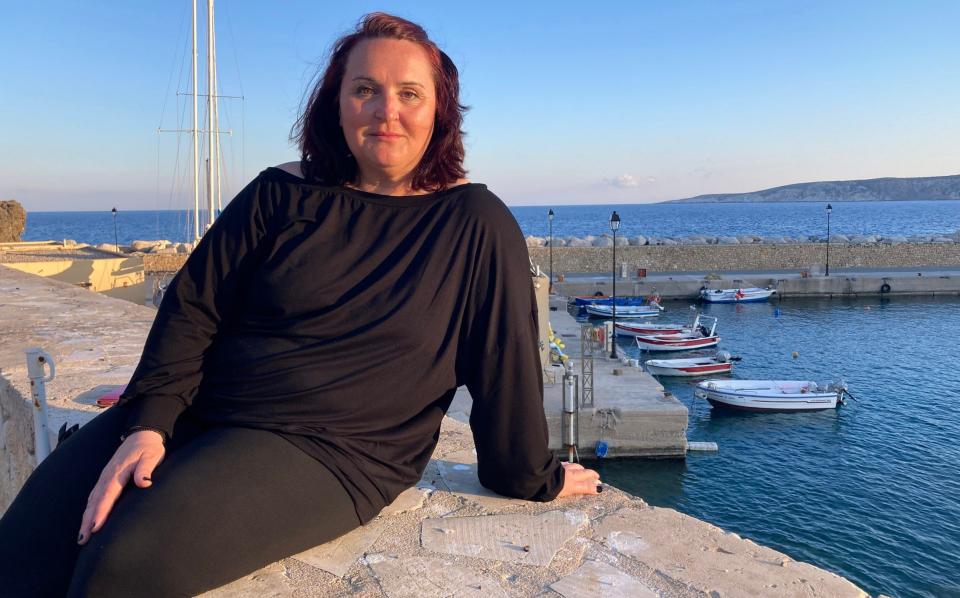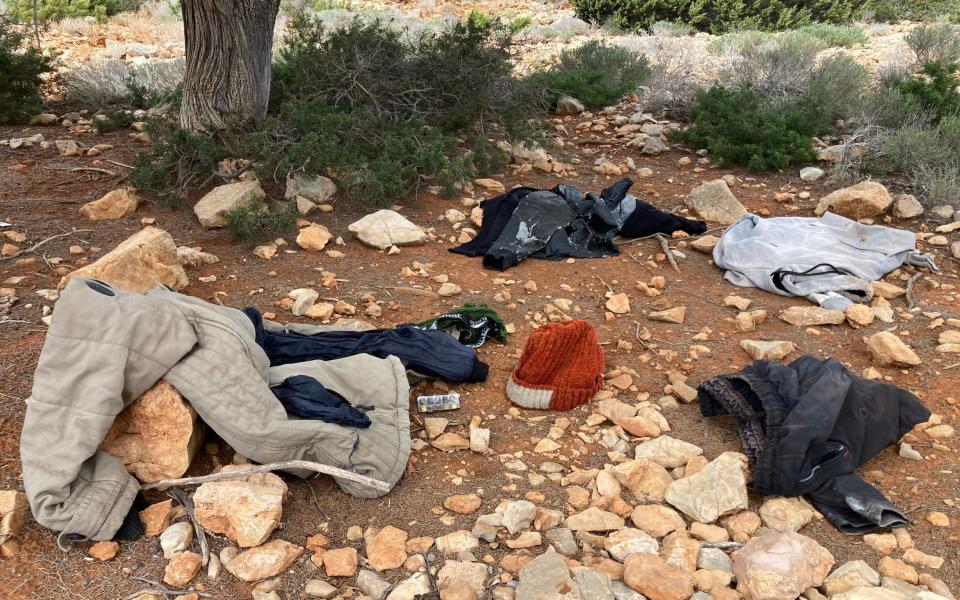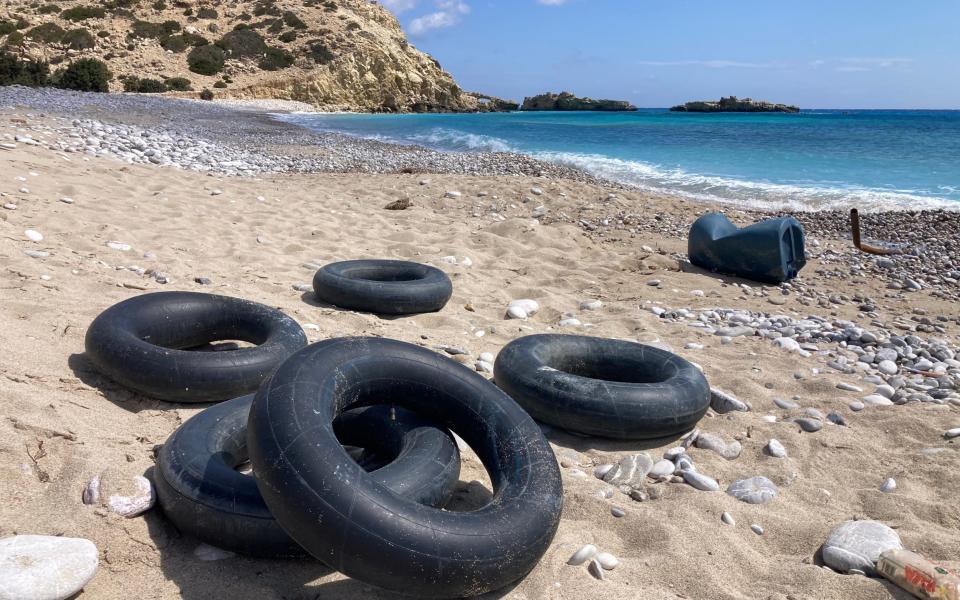There are only four children on the tiny Greek island of Gavdos, a yellowish stain on the blue horizon of the Mediterranean.
Three of these children belong to Efi Georgaka, who makes a living by beekeeping, raises sheep, pigs and goats, and works at the ferry ticket office in the island’s small port.
It is a carefree life with sunshine, empty roads and long beaches almost all year round. So far it is.
Gavdos, the southernmost point of Europe, is at the forefront of the migration crisis and has become the latest target of human trafficking gangs.
More than 1,000 migrants have arrived by boat since the beginning of this year, most of them departing from Tobruk on the Libyan coast.
The numbers may be modest, but the impact on such a small island is huge. Last week, 91 migrants arrived in one day, easily outnumbering the islanders.


“I know the island will change if things continue like this,” said Ms. Georgaka, who has lived on the island for 16 years.
“As on other Greek islands, there will be a need for police, coast guards and navy. We don’t want them here. We value the freedom and peace we have. Everybody knows everybody.”
Gavdos, one of the most remote parts of Greece, has no facilities or personnel to handle small boats, except for two municipal employees and a police officer.
The island’s deputy mayor, Lefteris Lougiakis, asked for help from the Athens government. Additional food and blankets arrived but not much else. He fears the situation will get worse.
“I think there will be a lot more boats this summer. It’s easy for immigrants to come here; No Frontex [the EU border agency]There is no navy or coast guard to stop them. “People on the island are worried that we will be like Lampedusa, overrun by immigrants.”
The route is longer and more dangerous than the crossing from Tunisia to the Italian island of Lampedusa, but that hasn’t stopped smugglers from promoting it as the ultimate way to enter Europe through the back door. There’s good money to be made: Each immigrant pays up to $5,000 for passage.


In a sign that Europe is alarmed at the possibility of mass exodus from Egypt, EU leaders on Sunday promised Cairo a 7.4 billion euro financing package.
The agreement, which aims to reduce the flow of immigrants as well as promote economic development, was announced in the Egyptian capital by EU Commission President Ursula von der Leyen and the prime ministers of Greece, Italy, Austria and Belgium. So is the president of Cyprus. Of the total amount promised, 200 million Euros will be used to manage migration.
“We must prevent the opening of new migration routes and we will work very closely with Egypt to ensure this is achieved,” Greek prime minister Kyriakos Mitsotakis said.
Gavdos has emerged as a new migrant destination due to pressures elsewhere, notably by the Greek coast guard and Frontex on migrant boats in the Aegean.
The strict policy followed in Italy by Giorgia Meloni, who invested political capital in stopping boats coming from North Africa, may also have been a factor.
Ms Meloni’s government hopes that plans to divert migrants gathered in the Mediterranean to camps in Albania will have a strong deterrent effect.
Migration route is a well-organized operation
Residents of Gavdos, which covers an area of approximately 11 square miles, fear their unique way of life is under threat.
There are only about 70 of them, and arriving on the island by ferry from Crete’s south coast feels like stepping back in time to a Greece light years away from the luxury and hedonism of Mykonos or selfie-taking overtourism. of Santorini.
The “capital” of the island is the village of Kastri, consisting of about a dozen houses on a ridge. The other main settlement, Sarakiniko, consists of a few ramshackle huts and taverns hidden among the dunes and overlooking a wide sandy beach. There are no taxis on the island and it is not possible to rent a car or moped, at least in winter.
Although the migration route is relatively new, it is a well-organized operation.
The majority of immigrants are Egyptian men and teenage boys, but there are also a small number of people of other nationalities, including Pakistanis, Bangladeshis, Syrians and Sudanese.


They always land at Tripiti beach, an undeveloped bay at the island’s southern tip that boasts turquoise shallows reminiscent of the South Pacific.
From there they must walk a stony path for about three miles to Korfos, a small seaside settlement consisting of a shuttered tavern and a few houses.
The road through the dwarf pine forest is full of abandoned clothes, half-eaten biscuit packets, water bottles and juice boxes with Arabic writings on them. There are clear signs of where migrants rested for shade under ancient junipers and twisted fir trees.
From Korkos they are taken to the island’s port and transported to Crete or mainland Greece.
“Some told me that they were held in prison-like conditions in Libya before crossing over,” said Vasilis Amvrosiadis, the island’s only doctor who treated the arrivals. “When they come, almost all of them have dermatological problems such as scabies.
“They come in small boats. Local people are surprised because they think that such boats are absolutely unsuitable for such a long journey.
“The boats all arrive at Tripiti beach. It has become a routine, they know exactly where to go. However, there is no capacity on the island to accept such large numbers. I call Gavdos the Spitzbergen of Southern Europe. It is remote and difficult to source.”
There are serious concerns among islanders that the influx of migrants could harm tourism as the season starts at Easter. This coincides with warmer weather and calmer seas, which will likely encourage more migrants from Libya.
‘If tourists hear this, they will be afraid to come’
“We will all go crazy if we miss the summer season,” said Stella Stefanaki at the small bakery she runs in the interior of the island. As he puts a tray of cheese and spinach pies in the oven, he remains unconvinced that the financing deal announced in Cairo over the weekend will solve the crisis.
“Europe gave Egypt millions to stop the boats, but what happens when the money runs out? Boats will start arriving again. I heard that 20,000 Egyptians are waiting to cross. How can we deal with this?” he added.
“People are worried, they want to find a solution as soon as possible,” said Yorgos Louyiakis, who runs The Four Brothers tavern, which overlooks a wide beach and indigo sea and the snow-capped Cretan mountains to the north.
“This affects people’s sense of security and their jobs. If tourists hear about the immigrants, they will be afraid to come to Gavdos. “Everyone here is worried about the summer tourist season.”